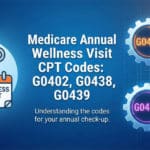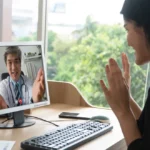Overcoming Patient Tech Barriers: Making RPM Accessible for All Demographics

Remote Patient Monitoring (RPM) ensures equitable access across all patient demographics. From elderly adults and rural residents to patients with limited digital literacy, many face barriers that can limit the benefits of RPM.
Remote Patient Monitoring (RPM) has greatly improved the modern day healthcare delivery model and boosted the patient engagement rate and quality of care delivery. With RPM, healthcare providers can easily track patient health data via wearables, cellular-enabled, and Wi-Fi monitoring devices that too without having to schedule in-patient visits.
Though RPM offers a lot of benefits when it comes to patient health and outcomes, it comes with some technology barriers, particularly in terms of demographics. These barriers include technological access, lack of digital literacy, socioeconomic factors, and data privacy concerns.
Table of Contents
ToggleAddressing the RPM Accessibility Gap Within the Community
The adoption of RPM for those having access to digital technology and those who do not is the foremost concern. Of all the individuals using RPM, those facing the problem are usually elderly, low income individuals, and rural communities.
Many elderly citizens are not comfortable using smartphones or tablets and face difficulty using the latest health monitoring software and devices. Since they have low digital literacy, they are less likely to engage with RPM programs. To overcome this, healthcare organizations can:
- Provide user-friendly devices with a clean interface
- Offer technical support and training to users
- Create community-based programs for ease of use
Not only the elderly, but patients residing in underserved localities and from low income backgrounds may find it hard to access modern day healthcare technology. Some ways to improve their accessibility include offering grants and subsidies to low income patients so they can install Wi-Fi to use these devices. Other ways to bridge this gap include:
- Partnerships with community organizations
- Providing educational resources to individuals
- Generating awareness about RPM programs
Improving Digital Literacy For Healthcare Across All Demographics
When it comes to providing access to patients with little to no technical knowledge, improving digital literacy is the foremost step to accomplish. The following strategies can help improve digital literacy:
- Multilingual education and training in healthcare technology
- Simplified interfaces and user-friendly software applications
- Application interfaces that are easy to navigate
- Ongoing education and guidance on digital literacy
Boost Patient Engagement With HealthArc’s RPM
Despite all the above challenges, remote patient monitoring is gaining worldwide popularity, regardless of the demographic in which it is implemented. To ensure it can really bring positive results in terms of outcome and engagement, it is important to take the right steps to overcome these existing barriers.
By addressing issues such as accessibility and digital literacy, RPM can deliver more efficient results for patients from all walks of life.
HealthArc’s Remote Patient Monitoring platform aims to improve patient care by assisting providers in boosting health outcomes and achieving their organizational goals. Our platform allows patients to report their vitals via FDA approved devices. This medical data is monitored by the healthcare providers who take necessary actions by making timely interventions.
Our RPM software solution is designed to reduce healthcare costs, increase clinical efficiency, and generate additional revenue for providers. Healthcare providers can conveniently communicate with patients via SMS, audio, and video calls, to make timely interventions.
Key takeaways
- Simple FDA approved devices improve technology confusion.
- Onboarding Support guidance improves patient trust
- Language Accessibility: Multilingual interfaces make RPM inclusive.
- Care giver involvement support bridges tech gaps for seniors.
- Cellular-enabled devices solves internet issues.
- Visual & Audio Aids accessible formats help patients with impairments.
Frequently Asked Questions (FAQs)
These barriers include not using the internet, not being physically able to engage with technology, not having adequate digital skills, foreign languages, or even hearing-impaired individuals unable to communicate effectively with tech.
RPM can be easier for older people by using pre-paired FDA approved devices, simplification of the user interfaces and incorporation of the caretakers.
Yes it is. The use of multilingual visual instructions and relevant culturally adaptive communication can aid barrier reduction significantly.
Patients who lack familiarity with technology might find it difficult to engage. This can be improved by the provision of relevant materials, workshops, and adequate guidance, thus increasing compliance.
Yes, RPMs have cellular enabled gadgets. Patients can also get internet access from their providers, or they can give them the devices they need to connect.
HealthArc addresses gaps in care by multilingual remote care onboarding, providing user-friendly device kits, underserved patients education tools, caregiver workflows, and robust primary care—ensuring all patients, including the most vulnerable, can access and meaningfully engage in remote care.
Schedule a free demo today or call us at (201) 885 5571 to find out how our RPM platform can overcome patient tech barriers by making it more accessible.
Most Recent Blogs
Categories
Related Blog
- November 26, 2025 | Read Time: 14 mins
Return on Investment (ROI) of Remote Patient Monitoring (RPM): A Complete Guide for ACOs and Healthcare Organizations
The U.S. healthcare system continues its transition from fee-for-service models to value-based...
Learn More- November 24, 2025 | Read Time: 15 mins
Common RPM Pricing Models for Providers: A Profitability-Focused Guide
Remote Patient Monitoring (RPM) has rapidly emerged as one of the leading...
Learn More- October 23, 2025 | Read Time: 12 mins
How RPM Devices Improve Hypertension and Diabetes Outcomes in Medicare Populations
Remote patient monitoring (RPM) is transforming chronic care for Medicare beneficiaries. CMS...
Learn More


